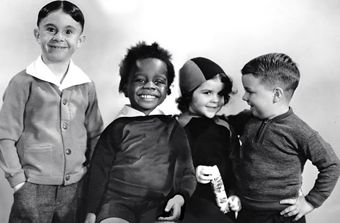 “The Little Rascals” was the original after-school special, seemingly on a local TV loop that ran every day of the week. Those kids and that dog were everywhere.
“The Little Rascals” was the original after-school special, seemingly on a local TV loop that ran every day of the week. Those kids and that dog were everywhere.
The shorts looked old even in the 1950s and ’60s, and the adults insisted on calling them “Our Gang” comedies, but no one seemed to mind: These inventive kids from the past always were worth hanging out with.
Almost 80 years after the debut of the first talkie found on “The Little Rascals: The Complete Collection,” the kids still are all right. The raw energy, big laughs and sly shenanigans all resonate in the new century. As far as early talkies go, this stuff holds up as well as anything. Funnier than quite a few modern sitcoms, in fact.
Richard Bann, who co-wrote a book about the Rascals, sums up the appeal: The series had “unmistakable charm and style. Sure you had spectacular gags … and slapstick, but you also find heart. In these films you find real people, people you like, people you can identify with.”
Another reason for the series’ enduring appeal is the unusual amount of location shooting done by Hal Roach Studios. Rather than hang around a stage, the kids (several generations of ’em) played out their adventures on the streets and vacant lots of Culver City, Calif.
The location shooting made the dinky L.A. suburb “America’s second home,” as one “Rascals” expert puts it on the DVD set. As time capsules, these shorts offer a pretty good idea of what it was like in sleepy cities way back then.
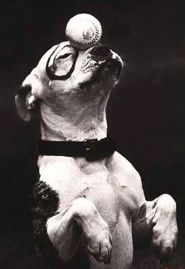 “The Little Rascals: The Complete Collection” isn’t an entirely accurate title: The set contains the talkies made by Roach from 1929-1938. There were plenty of silents before these 80 shorts (a trio are included on the bonus disc), and MGM limped on with the series after Roach left in ’38. In any case, this is the good stuff, the Rascals everyone remembers.
“The Little Rascals: The Complete Collection” isn’t an entirely accurate title: The set contains the talkies made by Roach from 1929-1938. There were plenty of silents before these 80 shorts (a trio are included on the bonus disc), and MGM limped on with the series after Roach left in ’38. In any case, this is the good stuff, the Rascals everyone remembers.
Roach supposedly got the idea for his kid corps after watching a couple of boys arguing over ownership of a big stick on the railroad tracks. He assembled his multiethnic casts and presented them as “Our Gang.” The “Little Rascals” title came into play when the series was sold to local TV in the 1950s, based on Roach’s subtitle references to the kids as Rascals.
Genuis Entertainment’s set comes billed as “uncut,” most likely a reference to some abrupt edits done in the 1970s to remove dated racial jokes about the black kids. While some of the stuff you’ll see here truly is offensive, the commentators point out, the series did equal-opportunity goofing on all of the kids’ physical characteristics and dialects.
Richard Lewis Ward, who wrote a book about the kids series, notes that with “Our Gang” blacks did “much, much better than they fared in feature films of the time.” He calls Roach’s casts culturally “revolutionary,” with white and black children playing together as equals, taking turns being clever and dumb. There is much evidence here for his viewpoint.
Jerry Tucker, one of several surviving “Our Gang” kids who participated in the extras, dismissed the racial issue as well. “This is just kids doing strange and funny things.”
Dick Moore (“Dickie”), however, looks back with distaste on some of the crude racial gags of the Buckwheat era. He does say, “There was no meanness” in the shorts.
Tucker talks about life as a Roach kid, being tutored on the lot and mingling with the big stars of the day: “We (just) thought that everybody worked in the movies.” The bonus disc features interviews with a handful of the elderly Rascals.
(Side note: Annie Ross, who had a brief gig with “Our Gang,” gives an interesting rundown on her life in this section, an unexpected bonus for those interested in the jazz singer/horror actress. “We had a group called Lambert, Hendricks and Ross …”)
Other extras are the three silents (with commentaries), an overview docu, and a seven-minute piece on the race issue. The actors and experts appear in some video introductions that don’t add much.
The short booklet offers a page on “The Curse of the Rascals,” telling how an unusual number of the actors suffered early deaths.
The “Rascals” video and audio quality varies quite a bit, as you’d expect, but in general these shorts look surprisingly good due to a series restoration (that had been done previously). Most episodes are highly watchable. At worst, there is persistent flashing and some of the older audio tracks are scratchy. “Our Gang” fans are complaining about the presence of some 16 mm source material, indicated by Blackhawk titles, so if you care check that out issue.
Oh yeah, someone should take notice of the “Rascals” influence on rock. I count the Young Rascals, Spanky and Our Gang, Weezer, the International Submarine Band and perhaps the (U.K.) Rascals.
Related home video reviews:
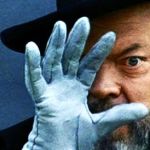
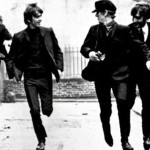
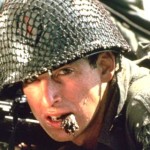
Leave a Reply